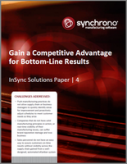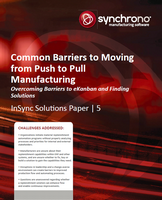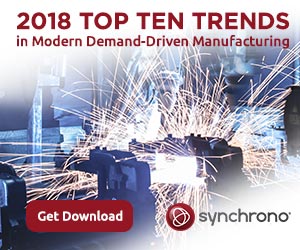Kanban Series White Paper: Gain a Competitive Advantage for Bottom-Line Results
In this white paper, we look at the competitive edge Demand-Driven Manufacturers gain by not only being devoted to driving flow and eliminating waste, but also in enabling their organizations to become best-in-class by using Pull and eKanban software technology. These manufacturers provide valuable opportunities to their customers and, because of their Lean Manufacturing approach and continuous improvement efforts, are equipped to increase their effectiveness, productivity and capacity while achieving a competitive advantage in the marketplace.






